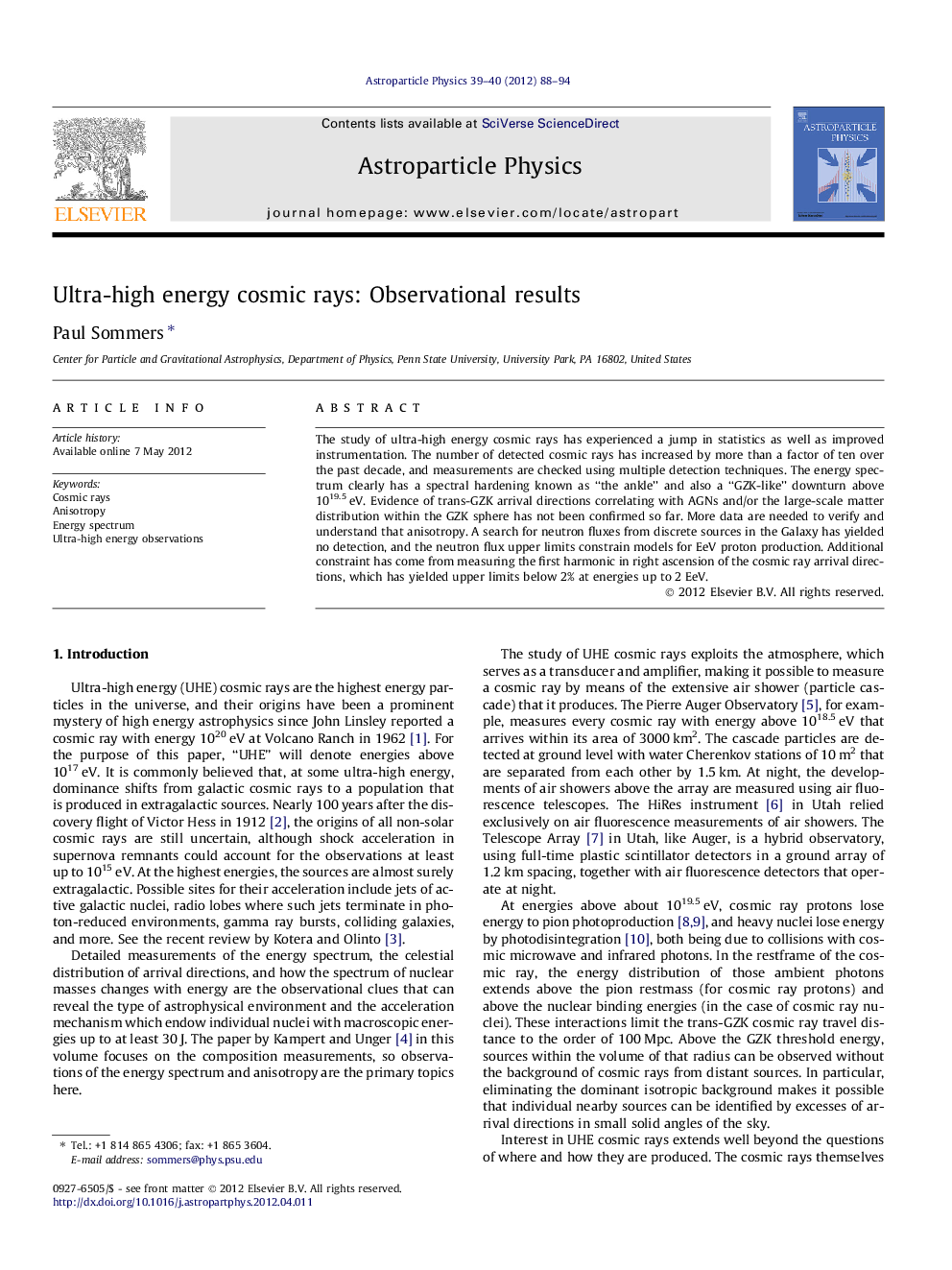| Article ID | Journal | Published Year | Pages | File Type |
|---|---|---|---|---|
| 1770802 | Astroparticle Physics | 2012 | 7 Pages |
The study of ultra-high energy cosmic rays has experienced a jump in statistics as well as improved instrumentation. The number of detected cosmic rays has increased by more than a factor of ten over the past decade, and measurements are checked using multiple detection techniques. The energy spectrum clearly has a spectral hardening known as “the ankle” and also a “GZK-like” downturn above 1019.5 eV. Evidence of trans-GZK arrival directions correlating with AGNs and/or the large-scale matter distribution within the GZK sphere has not been confirmed so far. More data are needed to verify and understand that anisotropy. A search for neutron fluxes from discrete sources in the Galaxy has yielded no detection, and the neutron flux upper limits constrain models for EeV proton production. Additional constraint has come from measuring the first harmonic in right ascension of the cosmic ray arrival directions, which has yielded upper limits below 2% at energies up to 2 EeV.
► Clear structure is evident at the high end of the cosmic ray energy spectrum. ► Anisotropy in cosmic ray arrival directions needs confirmation and clarification. ► Evidence for galactic sources has not been found below the ankle of the spectrum.
